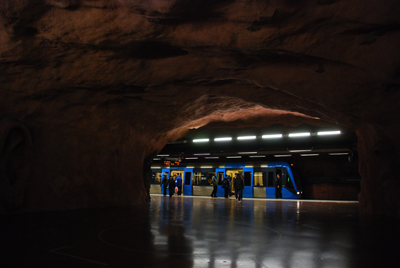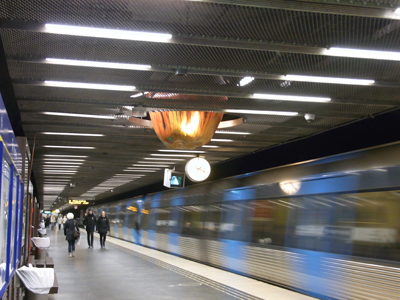
Top > HISTORY 70'


Instead of cladding the rock in concrete, in the 1970s
the approach was to cover the rock face with a layer of sprayed
concrete 7 to 8 cm thick. The sprayed concrete follows
the shape of the rock, giving an illusion of a station in a cave.
The first station to be built using this method is Masmo .
Building in sprayed concrete was much cheaper than previous methods
and meant money left over to design artistic concepts for
entire stations. However, the cave-like stations aroused a heated debate
and there were those who were afraid that these underground grottos would
inspire thoughts of the underworld, Hell and other horrible things.
For this reason, colored metal grids were placed in the ceiling and
on some of the walls of the first stations constructed using this method
to hide the rock face.Such as Masmo, Stadion,
Tekniska högskolan.
This photo is Tekniska Station. Look at the ceiling, which has metal grids.

When the blue line was built, however, it was decided to show the sprayed
concrete underground caves as they really were. Cave stations like this are
not found anywhere else in the world
and are what makes the Stockholm Metro unique.
The typical Metro art of the 1970s included stations designed as a coherent
whole, with artists working in long-term partnerships with architects
and engineers to create complete environments rather than individual artworks.
1970s stations include
Rådhuset, Kungsträdgården, Solna centrum,
Näckrosen, Rinkeby, Tensta,
Alby, Bergshamra.
Those stations are dynamic and I want to suggest you to go there.
See also GALLERY
| BACK | TO 1980S |